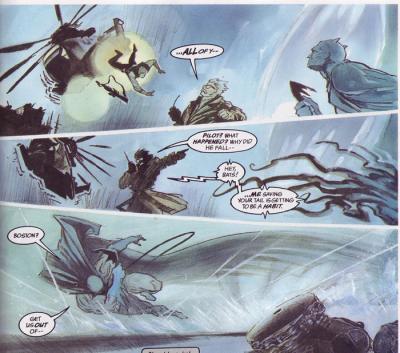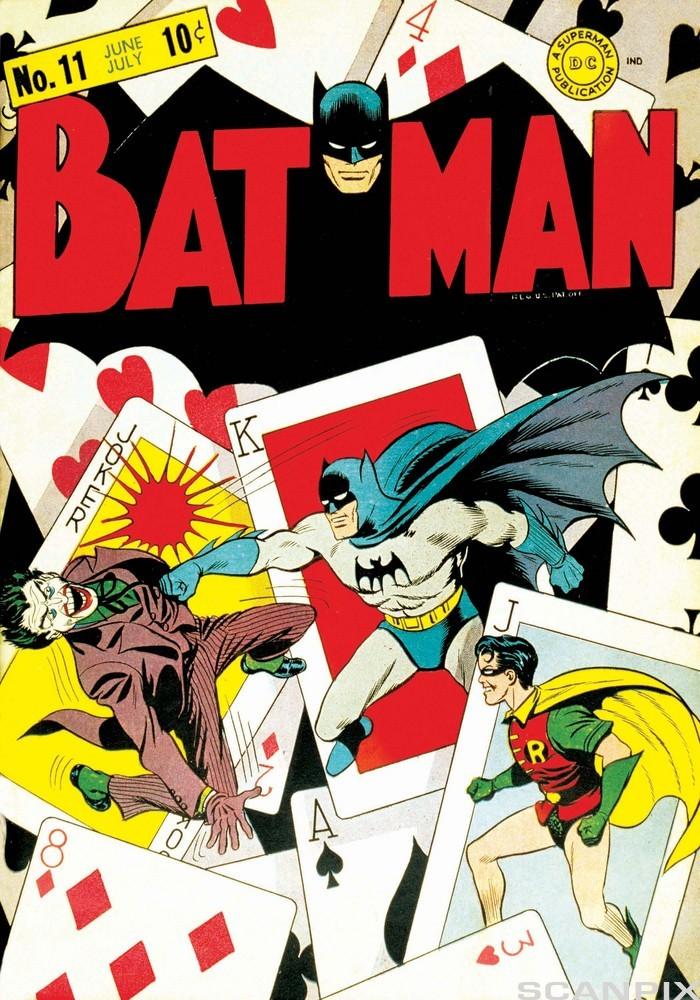
A comic may have its literary qualities as a narrative in the combination of pictures and text. And it certainly is good entertainment. Who has not at one time enjoyed a comic strip or a cartoon? Comics are mandatory reading training for children, but many young people and also grown-ups enjoy comics and cartoons, and admit it openly…
Make sure you know these words and expressions before you read the article
Vocabulary
mandatory, exaggerating, educational, legacy, cutlery, spin-off, heroism, albeit, to provide, hegemony, protagonist, credibility, alter ego, to recur, motif, sketch
Walt Disney

He called them “Silly Symphonies”, his little animated short films with “human” animals.
Mickey Mouse was the first (1928) and Donald Duck appeared six years later. It is not an exaggeration to claim that Walt Disney had a ground-breaking significance for the development of comics and cartoons. His characters are
familiar and popular all over the world. His
universe consists of funny animals with human qualities, and his stories are harmless and educational with a good moral. Clever Mickey Mouse is the hero for many children, while the short-tempered duck in his navy shirt and funny voice has many human qualities, which is probably why we love him. Disney’s cartoon versions of
Cinderella, Bambi, and Snow White are classics that have been enjoyed for generations. The
Disney Empire grew and became big business
in America. The first Disneyland amusement park was opened in Los Angeles in 1955; later a similar park, Disney World was opened in Orlando,
Florida (1971) and Euro Disneyland in France (1992).
Today the Disney industries employ several thousand people. Walt Disney’s partner Carl Barks contributed to the success by creating some of the characters and by writing and drawing some of the classic Donald Duck stories. Disney died in 1966 and Barks two years later, but their legacy is well taken care of. The Donald Duck magazine is still published weekly, and there are even special Disney channels on TV that present new (and old) Disney cartoons and feature films for children.The Disney spin-offs meet us everywhere – cutlery, blankets, wrapping paper, food, toys; there is no end to it.
American Values
Donald Duck and Mickey Mouse are American icons that have conquered the world. For a long time the comic and cartoon market was dominated by American productions. What we got was American values and qualities, and a dose of American heroism, like in the westerns. Strips about the classic Wild West heroes like Davy Crockett and Roy Rogers introduced many children to American history, albeit in a rather single-sided presentation. Usually the native population, the red Indians, were presented as savages who were rightfully hunted down by white, heroic freedom fighters. The Wild West provided loads of dramatic material for creative writers and drawers, and many boys have played cowboys and Indians inspired by what they had read in an American comic strip.
There is also a European comic tradition mainly represented by French authors such as Hergè (TinTin) and Goscinny / Uderzo (Asterix), but the comic market is still dominated by American comic production. An interesting and recent trend in the USA are the so-called "fusion comics" which combine elements from traditional super-hero comics with serious literary qualities and inspiration from French and Japanese comic tradition. These comics are published as hardback issues and not in the traditional magazine form. The Seattle-based Fantagraphics publishing company is fronting this ambitious trend of serious comics as an art.
The Cartoon
Watching Tom and Jerry leaves you with the question: Why don’t they give up their endless fight and simply be friends? Well, the answer is simple – because then there would not be any cartoon about them. So it goes on and on with one deadly stunt after another. This is what cartoons are all about. The universe of a cartoon is not limited by credibility or the laws of physics. In a cartoon anything goes. This is most likely why children love this kind of entertainment, because whatever they might imagine is possible in a cartoon, and the protagonists always survive no matter what they are up against. An interesting new-comer was the combination of cartoon and real film in “Who Framed Roger Rabbit” in 1988 with British actor Bob Hoskins starring with cartoon figure Roger Rabbit. Traditionally cartoons have provided safe and harmless entertainment for kids, but times have changed. Digital animation has opened for new possibilities, such as fascinating “documentaries” about e.g. dinosaurs or dramatic disasters in a sci-fi setting. In a modern animated film it is in fact hard to tell if the actors are real and just badly made up, because the animations are so close to real-life figures. The future of animated film, with 3D effects seems to offer an even more “realistic” thrill, for example what we have seen in “Avatar”.
Superheroes

Perhaps there is a human need to believe that if something awful is threatening the earth or a dangerous criminal is on the loose, someone will take action and save us. This has brought on the American super-heroes like Flash Gordon, Superman, Batman and Spiderman. These figures are ordinary men, but have the secret ability to turn into a superhuman that will come to rescue people in danger, bring the bad guys to justice and restore law and order. This kind of double-life or alter ego is a recurring motif in literature; two individual and opposite identities living within the same body. Victorian writer Robert Louis Stevenson’s “The strange case of Dr Jekyll and Mr Hyde” is an example, albeit with a somewhat more disturbing development and ending than we see when Superman alias Clark Kent saves the world in his superman costume and cape. Superman was in 2011 ranked number one in an international rating of top 100 comic book heroes.
Serious Fun
Traditionally a cartoon or a comic strip is pure fun and entertainment. But some creative authors and animators have entered the cartoon scene with a different approach. The Simpsons and South Park have become enormously popular TV-series with their satirical comment on topics or phenomena taken from real life. The drawings are more like sketches, but their universe and topics are clearly recognisable, and their ironic twist is both striking and sharp. The kids in South Park pick up elements in the news or in society in general and present them in a satirical and often provocative manner. It looks harmless because they are only children, but innocent as they may seem, beneath there is a serious message in both South Park and The Simpsons. For example – what does Homer Simpson imply with his remark: “I did nothing at work today, and I still got paid!”?
Comprehension
What is meant by the expressions “spin-off” and “a sci-fi setting”?
Discuss
- Do you think comics should qualify as literature?
- What is your favourite cartoon? Do you still enjoy cartoons? Why / why not?
- Comment on the Homer Simpson remark in the last line of the article.
- What is your opinion about the superhero tradition in comics and cartoons? Why is this tradition mainly American?
Presentation
- What are your favourite episodes from South Park and The Simpsons? Find them on YouTube, play them for the class and explain why these are your favourites.
- Analyse the episode with respect to stereotypes, attitudes, structure, etc.
Create a Cartoon
- Create your own cartoon story. You can use your favourite novel, film, comic as a starting point or create your own setting and characters. You might find the digital tool Toondoo useful. You need to create an account (free).
- What potential and limitations did you experience with the cartoon genre?